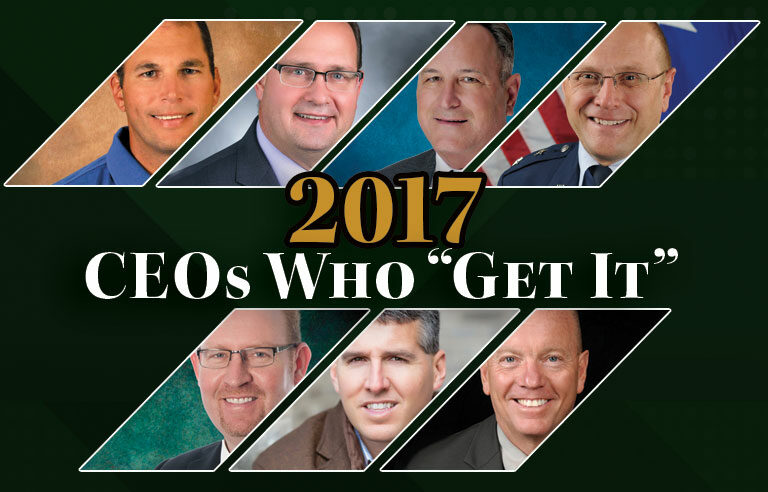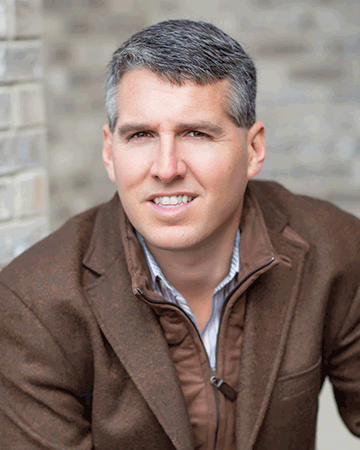The 2017 CEOs Who 'Get It'


Ryan Niles
CEO
Niles Industrial Coatings LLC
Fenton, MI
Niles Industrial Coatings LLC is a contractor organization with 275 employees. It specializes in industrial painting, linings, sandblasting, lead abatement and fireproofing. Niles strives to build a highly qualified team of dedicated professionals who embrace a culture focused on creating value for its customers.
Why is safety a core value at your organization?
Here at Niles, we say safety isn’t one thing – it’s everything. We start and end every meeting with safety. Our first and most important asset is our people. One model that we follow every day is “CTH – Care, Trust, Help.” We have to take the time to CARE about one another; if we do that, we develop TRUST and once we have trust, we can HELP one another. That is intertwined with our strong culture of safety and is something that has continuously been a core value in our company. It is a key component to our success.
I would say that safety is something that was originally instilled in me by my father. One thing about my father I am fond of sharing, when he would hire a new employee he would visit them on a jobsite and ask “What’s your job?” The employee’s first response would usually be “I am a painter.” My father would say, “No, no you’re not. First, you are a safety person, then you are a painter.” He is one of the main reasons why safety is one of our main core values. Safety starts even before any task. It is involved at every level of what we do.
Describe your personal journey to becoming a CEO who “gets it.”
I was very fortunate growing up in the business, seeing how important safety was to my father. He tells a story from the late ’80s about the development of our safety program. They hired a consultant to put the program together and when it was completed they had a beautiful safety manual. Later on, during an audit, the safety manager came in and told them that they had a beautiful safety manual, but asked if they actually cared to physically and mentally follow it. He told them they seem more like book publishers than anything. This really disturbed my father and made him realize that the values were not lined up and they were just checking the boxes. That was when our culture started to change.
Safety has always been a deep part of our culture. I have a responsibility to take it to the next level. I take that responsibility very seriously. I have always said that I don’t want to be a company that just checks the box for safety. I want to make sure everything we do adds value and uses people’s time wisely; people should be learning and growing. If we are not an organization that is growing in size, knowledge and experience, then we aren’t doing it right.
What is the biggest obstacle to safety at your organization, and how do you work to overcome it?
One of the biggest obstacles in the past has been customers who don’t share our strong culture of safety. Fortunately, we have strategically picked customers who value safety as much as we do. In the past, we have worked with customers that said safety was important, but their actions were different than what was printed on their walls or in their mission statements. With that said, we have partnered with many organizations that believe safety is important. We overcome this obstacle primarily by being good enough to pick our customers. We aren’t forced to work with anybody that doesn’t prioritize safety. We are diversified by customer, by industry and by service type.
Also, related to our customers, about five years ago, we started working primarily owner-direct and not through general contractors or other third-party management companies. This has helped us to have a direct relationship with the customer and has allowed us to add much more value. In the past, historically, we would be adding a lot of value that would be diminished by the customer as our sophistication was in excess or exceeded some of the customers we worked for. Now, that sophistication and experience is passed on directly to the customer, which allows us to add value. This is something not only in safety but in operations and other efficiencies.
How do you instill a sense of safety in employees on an ongoing basis?
We don’t want employees to ever feel like they are being policed. This is something that has to be taken into the culture. They have to look out for one another. This goes back to the CTH – Care, Trust, Help. I always tell people, “We are humans and we make mistakes.” If we have a family environment and look out for one another, hopefully that mistake – such as forgetting to put your safety glasses on] – their partner or co-worker will remind them to put their safety glasses on. If we focus on the little mistakes, we will never have a big mistake. We instill safety in our employees by teamwork, family and working together. We put the ownership on the employees, not on the management or supervision, but instilling it where it starts, at the employee level.
How does your organization measure safety? What are the leading indicators that show you how safe your organization is, and where do you see room for improvement?
We track near misses at a very detailed level. Many companies often say “don’t sweat the small stuff.” We have the opposite mindset – if we spend time on the little stuff, the big stuff is less likely to happen. Therefore, we spend a lot of energy on the little things. For example, safety glasses, driving, cell phone policy … those types of things help us avoid the larger concerns that could potentially happen. We track the statistics and all of the standard performance indicators like most companies, but we really strive to go deeper and look at daily safety performance at every level.
Where we see room for improvement is getting the employees exposed to our culture as soon as possible. Often, when a new employee is hired, they will be sent through training, but until they attend one of our retreats or educational events, they do not truly experience our culture and the true family environment that is our company. We need to improve on how we integrate new employees into our culture.
What role does off-the-job safety play in your organization’s overall safety program? What types of off-the-job safety and health programs does your organization offer to employees?
Off-the-job safety is just as important as on-the-job safety for two main reasons. One, I do not think you can be wired to be safe at work and be unsafe at home. We focus on our employees taking safety home, like when they are sitting in their tree stand hunting – are they tied off? Are they wearing the right equipment or PPE? When they are at home working on a project are they using the right ladder? Are they wearing the correct footwear? All those kinds of things. We are a family organization and if an employee is in need of equipment or tools at home, we loan it to them or make the necessary items available to them. On-the-job safety and off-the-job safety is one in the same.
As far as the safety plan, we remind our employees that safety is everything, but they have to continually grow themselves in safety and in knowledge of their trade. I think at the end of the day the most valuable thing is a continued education.
Post a comment to this article
Safety+Health welcomes comments that promote respectful dialogue. Please stay on topic. Comments that contain personal attacks, profanity or abusive language – or those aggressively promoting products or services – will be removed. We reserve the right to determine which comments violate our comment policy. (Anonymous comments are welcome; merely skip the “name” field in the comment box. An email address is required but will not be included with your comment.)


